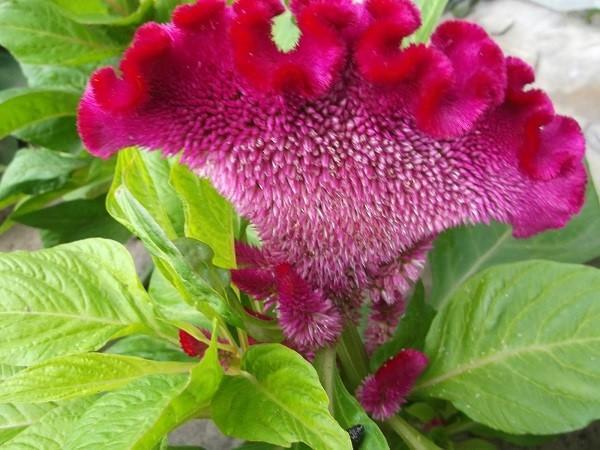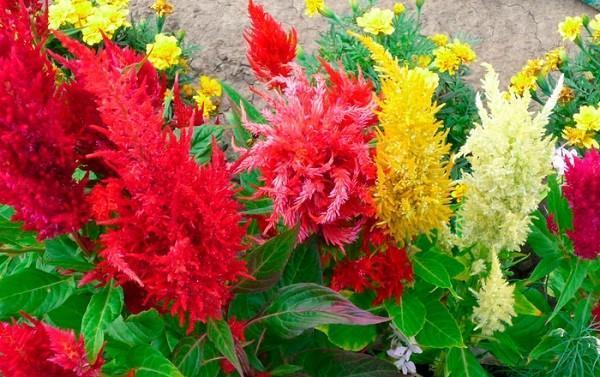Celosia is a bright representative of unpretentious annual flowers that bloom until autumn
 Unlike perennials, which bloom on average no more than two weeks, annuals are a real decoration of a garden or flower bed. Almost all representatives of annuals have a long and abundant flowering, which allows them to form beautiful bright compositions of the most diverse color range. One of these plants is celosia.
Unlike perennials, which bloom on average no more than two weeks, annuals are a real decoration of a garden or flower bed. Almost all representatives of annuals have a long and abundant flowering, which allows them to form beautiful bright compositions of the most diverse color range. One of these plants is celosia.
Common plant species
Celosia belongs to the Amaranth species. Most often, the following subspecies are used for home cultivation:
- Low-growing cellosia comb. It grows no more than 20 cm in height. It is good to plant it as curbs along paths. The shape of the inflorescence resembles a red cockscomb, for which the plant is called so.
- Tall feathery celosia. A larger representative of these annuals can be about 60 cm tall and most often grows against an average flower bed background. For a long spike-shaped inflorescence, the plant is called fox tail.
Cockscomb and fox tail can not only be grown in a flower bed, but also used to create compositions in a dried form. Dry inflorescences retain their shape and color for a long time.
The bloom lasts more than 80 days.
A few words about growing an annual flower

Celosia doesn't like fresh organic fertilizers and may die as a result of their introduction before planting.
The place for planting celosi should be chosen on the sunny side of the site, where there are no drafts. The best way to grow an annual flower is seedling, when sowing seeds in the ground, flowering occurs only in September, respectively, it will be shorter.
If you purchase seedlings in a store or on the market, it is better to give preference to bushes with a closed root system. They must be planted at a distance of 30 cm from each other.
In leaving, the celosis is quite simple, and does not require special attention. Regular weeding and removal of weeds, loosening the soil around the bush, and moderate watering are all she needs. When a flower is grown in fertile soil, it is able to grow without additional fertilizing.